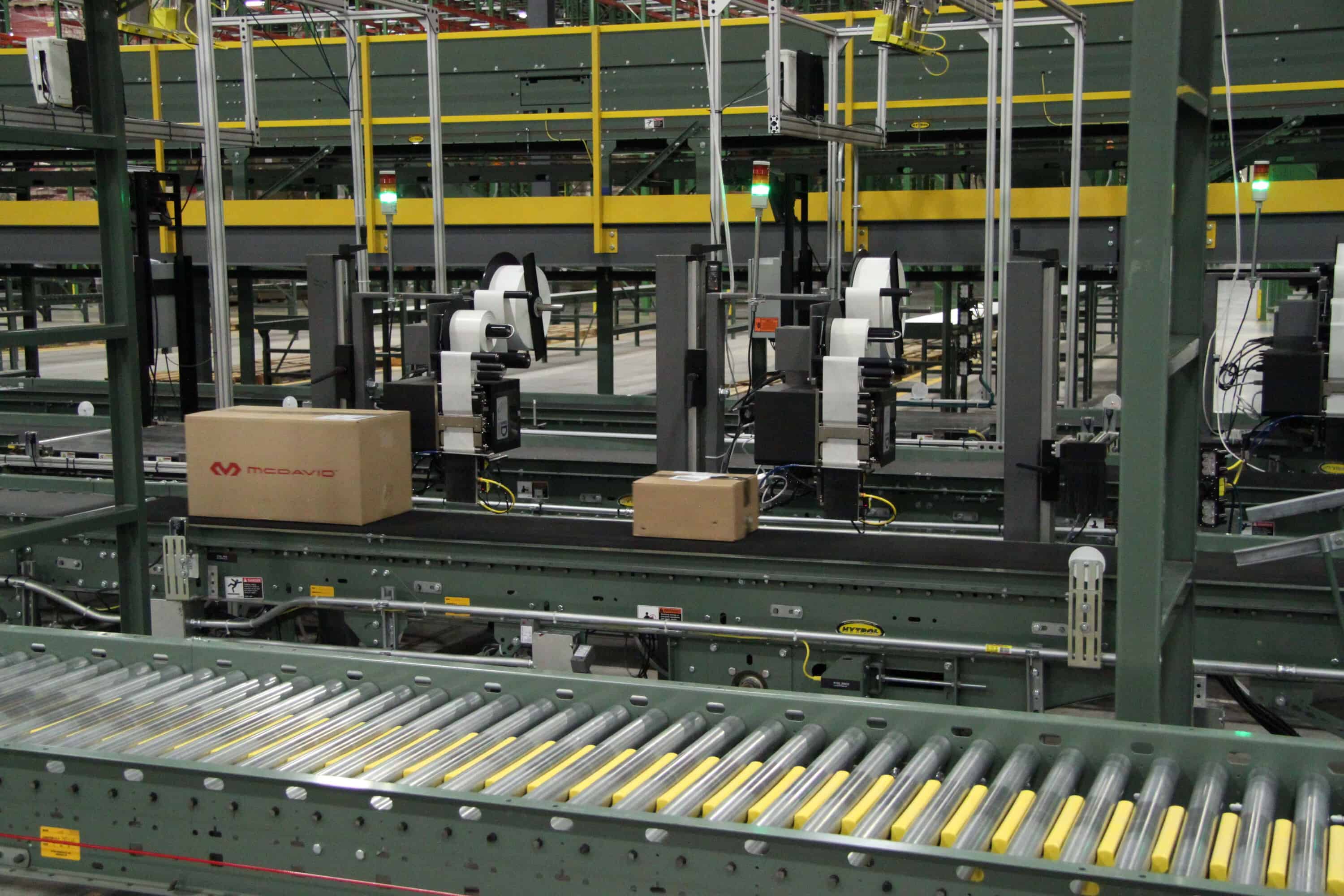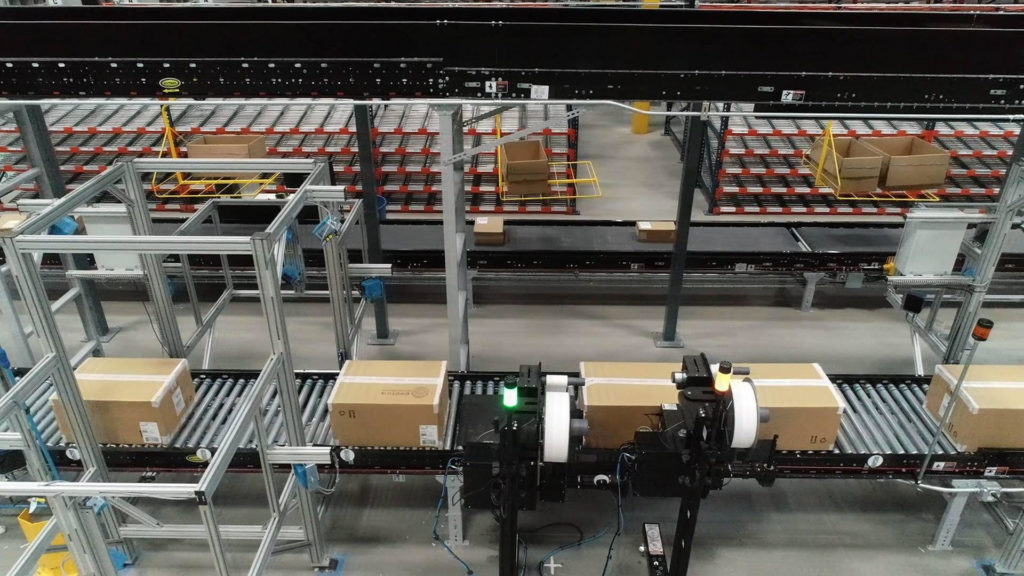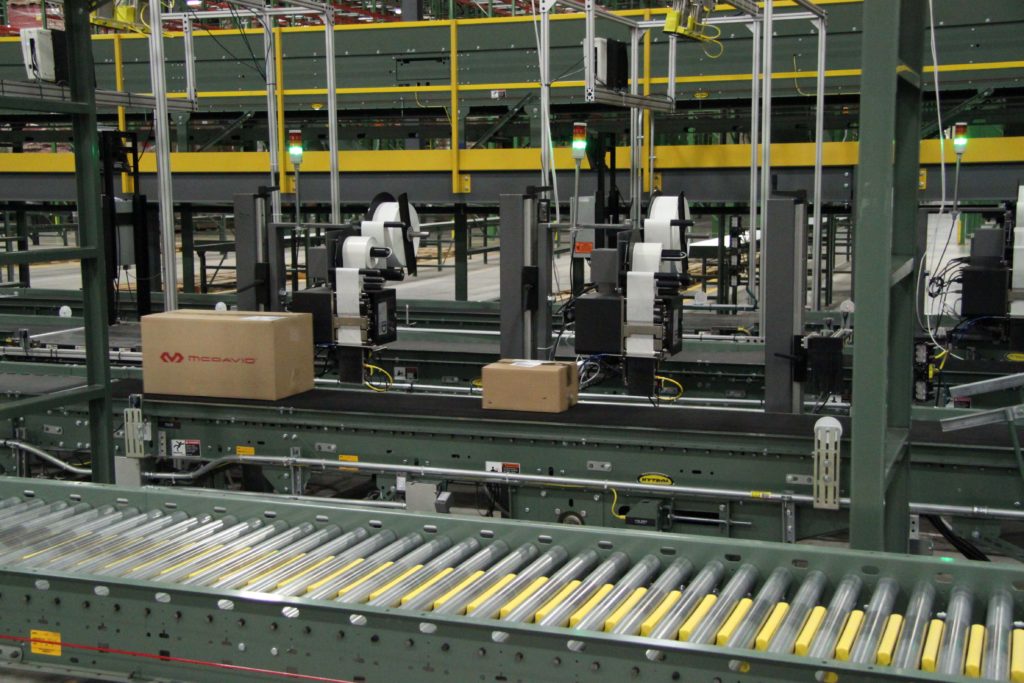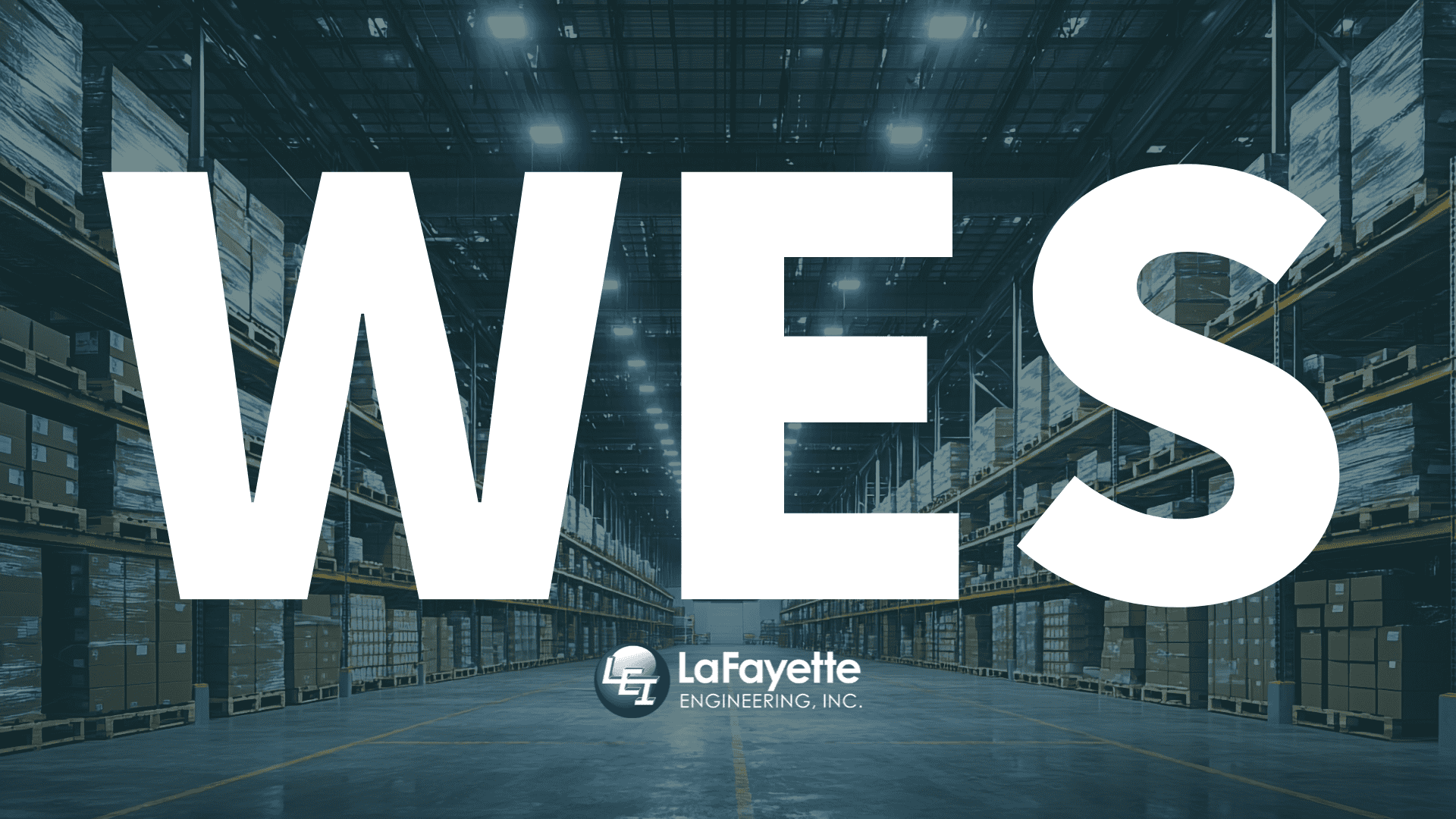Table of Contents
High-speed merge conveyors are revolutionizing the material handling industry by streamlining operations, increasing throughput, and reducing bottlenecks in distribution centers and warehouses. These advanced conveyor systems are designed to merge multiple conveyor lines into a single, high-speed flow, ensuring that products move seamlessly and efficiently through sorting and distribution processes.
At Lafayette Engineering, a premier provider of material handling solutions, high-speed merge conveyors are at the forefront of their innovative approach to optimizing logistics. With decades of experience in conveyor system design, installation, and integration, Lafayette Engineering delivers tailored solutions that enhance productivity for businesses across various industries.
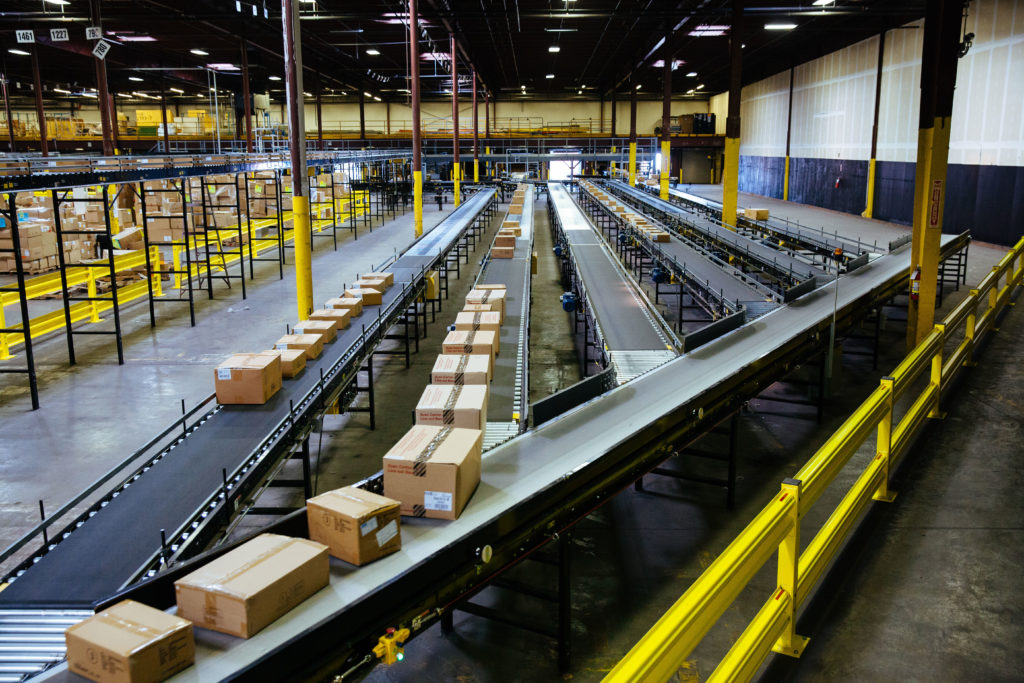
Understanding High-Speed Merge Conveyors
A high-speed merge conveyor is a sophisticated system that combines products from multiple conveyor lines into one continuous flow. This process is essential for industries that require rapid sorting and distribution, such as e-commerce fulfillment centers, parcel sorting facilities, and large-scale warehouses.
These systems utilize diverting technologies like right-angle pushers, steering wheels, and belt merges to manage the flow of goods. The goal is to ensure that products enter the main conveyor line at precise intervals, maximizing throughput while preventing congestion.
Key Features of High-Speed Merge Conveyors
- Speed & Efficiency – These conveyors operate at speeds of up to 600 feet per minute, ensuring that products are merged quickly without delays.
- Advanced Control Systems – Equipped with programmable logic controllers (PLCs) and sensor-based technology, they optimize the merging process to reduce errors and prevent product damage.
- Versatile Merging Options – They support different types of merging, including parallel, sequential, and priority-based merging, allowing for customization based on operational needs.
- Robust Construction – Built with durable materials and high-performance motors, these systems can handle heavy loads and operate continuously in demanding environments.
- Seamless Integration – Designed to integrate with existing conveyor systems, high-speed merge conveyors enhance the overall workflow without requiring a complete infrastructure overhaul.
Applications of High-Speed Merge Conveyors
High-speed merge conveyors are used in a wide range of industries where fast and efficient product movement is essential. Some of the most common applications include:
1. E-Commerce & Fulfillment Centers
Online retailers process thousands of orders daily, requiring seamless merging of different order streams. High-speed merge conveyors ensure that items from multiple picking zones are efficiently combined into a single flow, ready for packing and shipping.
2. Parcel & Postal Sorting
High-speed merge conveyors are a staple in parcel sorting hubs where packages of different sizes must be routed quickly. These conveyors merge parcels from various intake lines into one, sending them toward the appropriate sorting stations.
3. Automotive & Manufacturing
In production facilities, components often arrive from different conveyor lines and need to be merged before assembly. High-speed merge conveyors help ensure that manufacturing processes remain smooth and uninterrupted.
4. Food & Beverage Processing
High-speed merge systems help in sorting and packaging food products, ensuring that items such as bottled beverages, canned goods, or frozen products move through the production line efficiently.
5. Pharmaceutical & Healthcare Distribution
High-speed merge conveyors play a crucial role in sorting and distributing medical supplies and pharmaceuticals, ensuring accurate deliveries to hospitals and pharmacies.
Benefits of High-Speed Merge Conveyors
1. Increased Throughput
With the ability to handle thousands of products per hour, high-speed merge conveyors significantly increase distribution and fulfillment efficiency. This leads to faster order processing and reduced lead times.
2. Reduced Labor Costs
Automating the merging process eliminates the need for manual intervention, reducing labor costs while improving accuracy and consistency.
3. Minimized Bottlenecks
A well-integrated high-speed merge conveyor reduces backlogs and delays, preventing congestion in sorting and distribution centers.
4. Scalability for Future Growth
As businesses expand, high-speed merge conveyors can be easily scaled and upgraded to handle increased product volumes.
5. Improved Order Accuracy
With automated tracking and control systems, high-speed merge conveyors ensure that products are directed correctly, minimizing mis-sorts and improving overall accuracy.
How Lafayette Engineering Leads the Industry in High-Speed Merge Solutions
Lafayette Engineering has established itself as a leader in the material handling industry by providing cutting-edge conveyor solutions for businesses across North America. Their expertise in custom conveyor design and integration ensures that clients receive solutions tailored to their specific operational needs.
Custom Engineering & Design
Every facility has unique requirements, and Lafayette Engineering offers custom-designed high-speed merge conveyors that fit seamlessly into existing operations. Their team of engineers evaluates factors like product dimensions, weight, and traffic flow to design the optimal solution.
Advanced Control Systems
Lafayette Engineering’s high-speed merge conveyors are equipped with intelligent control systems that use real-time data to monitor and adjust conveyor speed, spacing, and merging patterns. This ensures smooth operations and prevents system overloads.
Seamless Integration with Warehouse Automation
Lafayette Engineering specializes in integrating high-speed merge conveyors with automated storage and retrieval systems (AS/RS), robotic picking solutions, and order fulfillment technologies. Their expertise helps businesses create a fully automated and synchronized workflow.
Reliable Support & Maintenance
Beyond installation, Lafayette Engineering provides ongoing support, system optimization, and maintenance services to ensure long-term performance. Their dedicated customer service team helps clients troubleshoot issues and maximize system efficiency.
Choosing the Right High-Speed Merge Conveyor for Your Business
Selecting the right high-speed merge conveyor depends on several factors, including:
- Product Size & Weight: Ensure that the conveyor system is designed to handle the dimensions and weight of your products.
- Speed Requirements: Consider the required throughput to meet demand efficiently.
- System Integration Needs: The merge conveyor should integrate smoothly with existing conveyor systems and automation technologies.
- Budget & Scalability: Choose a solution that fits your current budget while allowing for future expansion.
Conclusion
High-speed merge conveyors are transforming the material handling industry by improving efficiency, accuracy, and productivity. Whether in e-commerce, parcel sorting, manufacturing, or food processing, these systems provide unparalleled benefits in streamlining operations.
With expertise in custom conveyor design, automation, and integration, Lafayette Engineering continues to lead the way in high-speed merge solutions. Their commitment to quality, innovation, and customer satisfaction ensures that businesses receive the most efficient and reliable conveyor systems to meet their operational needs.
For more information on how Lafayette Engineering can optimize your material handling processes, visit their High-Speed Merge Conveyor Solutions page today!

